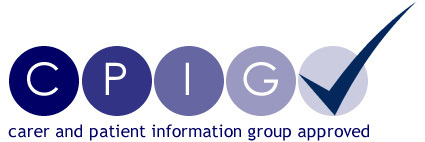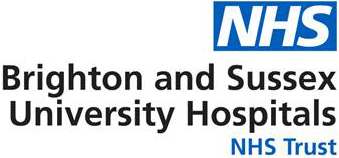Long term pleural chest drain
Download and print as a PDF
Download- What is a long term drain?
- Why do I need a long term drain & what is the alternative?
- Who will be doing the procedure?
- How do I prepare for the procedure?
- What happens during the procedure?
- Will it hurt?
- Are there any risks during the procedure?
- What happens afterwards?
- What problems may occur afterwards?
- Who can I contact for more information and support?
What is a long term drain?
This is a tube passing from your skin into the space between your lungs and rib cage (the pleural space) to drain the fluid (pleural effusion, see diagram below) which keeps building up.

Pleural effusion
Why do I need a long term drain & what is the alternative?
When fluid collects in the pleural space it can cause breathlessness and pain. Draining the fluid often relieves these symptoms. However, as the fluid can build up again many patients need to have it drained regularly in hospital.
Your consultant has recommended that you have a long term drain. It can be used to reduce the symptoms caused by large volumes of fluid and it will mean you won’t have to come to hospital so often.
This system allows for more regular, planned drainage of the fluid at home. You, and anyone close to you who wishes to be involved, will be shown how the drain works.
The alternative would be to continue to attend hospital at regular intervals to have the fluid drained using a needle or a temporary chest drain.
If you choose to have a long term drain, your district nurses will also have a training session, so that they can support you at home.
This leaflet will explain the procedure and how the drain can be managed at home.
Who will be doing the procedure?
The procedure will be carried out by a qualified doctor with a suitable level of experience. Because this is a Teaching Hospital, the doctor performing the procedure may be supervised by a senior doctor.
The procedure will take place in the procedure room in EACU Emergency Ambulatory Care Unit on Level 5 of the Thomas Kemp Tower at the Royal Sussex County Hospital.
How do I prepare for the procedure?
You may be asked to have a blood test a few days before you come to hospital, or on the day of the procedure. If it is on the same day, it will be a few hours before the procedure to make sure that there is no delay while we wait for your blood results.
To minimise risk of bleeding risk associated with the procedure, you may be advised to stop taking some of blood thinning medication by your doctor or from the hospital. Please only stop taking your blood thinning medication once you have been advised to stop by your doctor or from the hospital.
- If you take Clopidogrel, please stop taking it seven days before the procedure date.
- If you take Warfarin, please stop taking it five days before the procedure date. You will have an INR test on the day of the procedure to ensure it is at a safe level.
- If you take newer anticoagulants Rivaroxaban, Apixaban, or Dagibatran please stop taking it or injecting two days before the procedure date.
- High dose injection like Tinzaparin or Clexane injections will need to be stopped one day before the procedure.
- You do not need to stop taking aspirin before the procedure.
Please contact your doctor or the medical team if you are not sure about stopping your blood thinning medication before the procedure.
You may eat and drink as normal.
Most patients will be asked to arrive in the morning and be able to leave in the afternoon.
What happens during the procedure?
You will be asked to lie down on a bed where the doctor will perform an Ultrasound scan to check for the best place for the drain tube. Your skin will be cleaned and then a local anaesthetic will be injected to numb the area.
The tube will be then be inserted and the other end of the tube tunnelled underneath the skin to secure it well as it is intended to stay for longer term. The outer end of the tube will be covered with sterile dressings. You may have a chest X ray to check the drain is in the correct position.
Your GP and district nurses will have been given details about the equipment needed to use to drain at home.
Will it hurt?
The local anaesthetic will sting at first but then will allow the tube to be inserted without causing too much discomfort. Once everything has been set up the procedure should only take about 30 minutes.
Are there any risks during the procedure?
The procedure is very safe. Complications rarely happen because we use an ultrasound to guide where the tube is to be inserted.
Pain: Minor discomfort is common but is usually well controlled with painkillers. If you feel your pain is bad please tell a member of staff.
Bleeding: Very rarely, the chest drain may damage a blood vessel and cause bleeding. This will usually stop on its own. On very rare occasions it may be necessary to control the bleeding directly inside the body. It may also be necessary to replace the lost blood by means of a blood transfusion.
Infection: An infection of the drain site or inside the chest can happen but it is rare. This would be treated with antibiotics and sometimes requires removal of the drain. Your district nurse will also be able to check during their visit.
Before the procedure the consultant will be happy to discuss any questions with you.
What happens afterwards?
Once home, your district nurse will be asked to remove the first stitch after seven days and will arrange with you a convenient date to drain the fluid (ideally before you become too bloated or uncomfortable).
They will attach a drainage bottle to the drain, as this is more efficient and better for use at home. We recommend that no more than half a litre to one litre be drained at a time.
Many people prefer to drain more often so they have less fluid to drain at each ‘sitting’. This can be individually tailored to your needs, and hopefully you will settle into a routine that works best for you.
The second stitch will be removed after two weeks. After this time you may have normal baths and / or showers. But until then, try to avoid getting the drain site wet.
What problems may occur afterwards?
- Redness, or swelling around the drain: This is common in the first few days. If you develop a temperature or the area is weeping pus then contact your GP as you may need a course of antibiotics.
- Leaking around the drain site: This can happen for two to three weeks after the drain has been inserted. Ask your district nurse or nurse specialist for help and further advice.
- The drain coming out a little: Firstly, the drain would need securing with tape and a dressing, please liaise with your district nurse or nurse specialist immediately. You may then need an appointment made with the Acute Medical Team or Respiratory Department to see whether it can be reinserted. You can contact the GP or district nurses to help organise this.
- Pain: If the pain is only around the drain site please take paracetamol or your regular pain killers. If you have ongoing chest pain or tenderness please contact either your GP or nurse specialist.
Who can I contact for more information and support?
Emergency Ambulatory Care Unit (EACU): 01273696955 (extension 64002)
University Hospitals Sussex respiratory services
Your district nurse number (please write once known) ....................
The information here is for guidance purposes only and is in no way intended to replace professional clinical advice by a qualified practitioner.
The information here is intended for patients at Brighton and Haywards Heath.
Publication Date: September 2019
Review Date: January 2023


